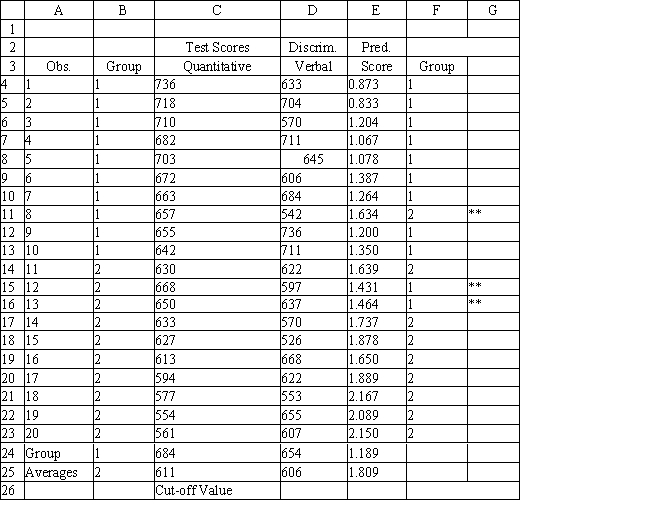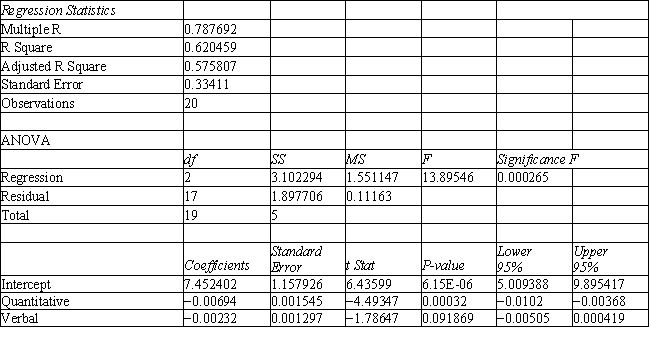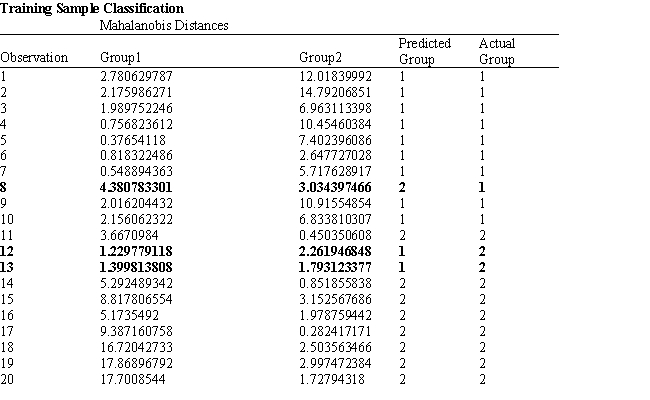Exhibit 10.1
The following questions are based on the problem description and the output below.
A college admissions officer wants to evaluate graduate school applicants based on their GMAT scores, verbal and quantitative. Students are classified as either successful or not-successful in their graduate studies. The officer has data on 20 current students, ten of whom are doing very well (Group 1) and ten who are not (Group 2) . 




-Refer to Exhibit 10.1. What is the verbal test score value of the group centroid for group 1?
Definitions:
Attachment
A deep emotional bond that connects one person to another across time and space, often discussed in the context of child development and relationships.
Inborn Response
Natural or instinctive reactions that individuals are born with, such as reflexes, not acquired through learning.
Temperament
A person's or animal's nature, especially as it permanently affects their behavior, reflecting in emotional reactivity and intensity.
Style of Reaction
The individual manner in which a person responds to stimuli or situations, often linked to temperament or personality.
Q1: Project 14.1 <font face="symbol"></font> The Pre-Paid
Q10: Refer to Exhibit 3.1. What formula should
Q11: Refer to Exhibit 11.2. What formula should
Q17: A company wants to use PERT to
Q28: Refer to Exhibit 7.2. What Risk Solver
Q29: It is possible to delay the start
Q39: Refer to Exhibit 11.7. What are
Q43: Which of the following definitions correctly defines
Q57: Refer to Exhibit 13.2. What is the
Q70: Binding constraints have<br>A) zero slack.<br>B) negative slack.<br>C)